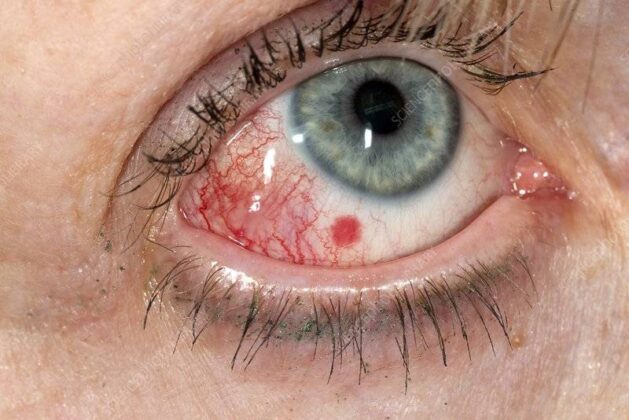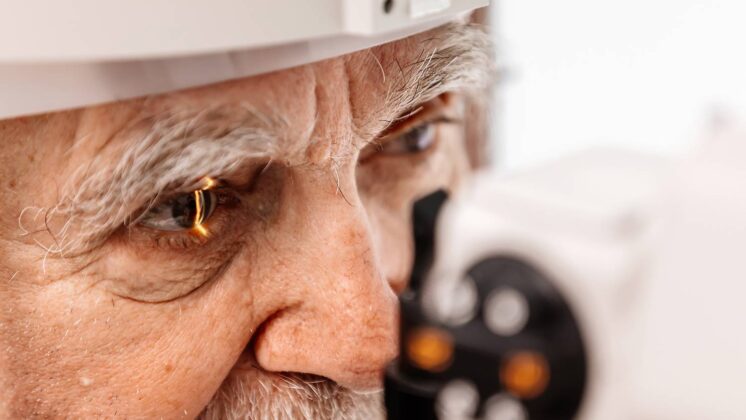Struggling with severe eye inflammation, macular edema, or post-surgical swelling? Looking for an effective treatment to reduce vision-threatening inflammation?
Triamcinolone (also known as kenacort) is a corticosteroid injection commonly used in ophthalmology to treat conditions like diabetic macular edema, retinal vein occlusion, uveitis, and post-surgical eye inflammation. It works by reducing swelling, fluid buildup, and inflammation inside the eye, helping to improve vision and prevent further complications.
But how exactly does Triamcinolone work for eye conditions? What are its benefits, risks, and costs?
In this blog, we’ll explore:
- How Triamcinolone injection is used for eye treatments
- The recommended dosage and procedure
- Potential side effects and who should avoid it
- The cost of Triamcinolone injection for eye conditions
If you’re considering Triamcinolone for your eye condition, keep reading to learn everything you need to know before treatment.
Contents
- 1 What is Triamcinolone Injection and How Does It Work for Eye Conditions?
- 2 What Eye Conditions Are Treated with Triamcinolone Injection?
- 3 How is Triamcinolone Injection Given in the Eye?
- 4 What is the Recommended Dose for Triamcinolone Injection in the Eye?
- 5 Is It Safe to Use? Are There Any Side Effects?
- 6 How Much Does Triamcinolone Injection Cost for Eye Treatment?
- 7 Should You Consider Triamcinolone for Your Eye Condition?
What is Triamcinolone Injection and How Does It Work for Eye Conditions?
Triamcinolone is a corticosteroid injection used to treat severe eye inflammation and retinal disorders. It works by reducing swelling, fluid buildup, and inflammation in the eye, helping to improve vision and prevent further damage.
In ophthalmology, Triamcinolone is commonly used for conditions like diabetic macular edema (DME), retinal vein occlusion (RVO), uveitis, and post-surgical eye inflammation. By suppressing the inflammatory response, it prevents vision loss, decreases retinal swelling, and promotes faster healing. This makes it an effective option for patients who do not respond well to first-line treatments like anti-VEGF injections.
What Eye Conditions Are Treated with Triamcinolone Injection?

Triamcinolone injections are used to treat severe inflammatory and retinal conditions that can cause vision loss. It is commonly prescribed when standard treatments like anti-inflammatory eye drops or anti-VEGF injections are not effective.
1. Diabetic Macular Edema (DME)
- Swelling in the macula (central part of the retina) due to diabetes-related blood vessel leakage.
- Triamcinolone helps reduce fluid buildup and improves vision.
2. Retinal Vein Occlusion (RVO)
- A blockage in the retinal veins causes fluid leakage and swelling (macular edema).
- Triamcinolone helps control inflammation and prevents further vision damage.
3. Uveitis (Eye Inflammation)
- A condition where the middle layer of the eye (uvea) becomes inflamed, leading to pain, redness, and blurred vision.
- Triamcinolone works by reducing inflammation and preventing long-term eye damage.
4. Post-Surgical Eye Inflammation
- After cataract or retinal surgery, some patients experience excessive swelling and inflammation.
- Triamcinolone injections help control post-surgical inflammation, speeding up recovery.
5. Macular Edema (Swelling in the Retina)
- Can occur due to diabetes, eye surgery, or inflammatory conditions.
- Triamcinolone reduces swelling and improves retinal function.
This injection is often used when other treatments fail to provide relief. However, it must be administered under expert supervision to avoid complications. Next, let’s discuss how Triamcinolone is given as an eye injection.
How is Triamcinolone Injection Given in the Eye?
Triamcinolone is administered as an intravitreal injection, meaning it is injected directly into the eye’s vitreous cavity under sterile conditions. The procedure is quick, painless, and performed in a doctor’s office using local anesthesia to numb the eye.
The ophthalmologist will:
- Numb the eye using anesthetic drops.
- Clean the eye with an antiseptic solution to prevent infection.
- Inject Triamcinolone into the vitreous (gel-like substance in the eye) using a fine needle.
- Monitor for a few minutes to ensure there are no immediate complications.
The medication gradually reduces inflammation and swelling, offering relief for weeks or months. Repeat injections may be needed depending on the severity of the condition. Post-injection care includes avoiding rubbing the eye and following up with the doctor to monitor eye pressure and healing.
What is the Recommended Dose for Triamcinolone Injection in the Eye?
The dosage of Triamcinolone for eye conditions varies based on the severity of inflammation and retinal swelling. The most commonly used dose in ophthalmology is 2-4 mg per injection, administered directly into the eye’s vitreous cavity (intravitreal injection).
For conditions like diabetic macular edema (DME) or retinal vein occlusion (RVO), a typical dose of 4 mg in 0.1 ml is used. In cases of uveitis or post-surgical inflammation, lower doses around 2 mg may be sufficient.
The effects of a single injection can last for several weeks to months, but repeat injections may be required depending on the patient’s response. The doctor will determine the frequency and dosage based on eye pressure, swelling reduction, and overall treatment progress.
Is It Safe to Use? Are There Any Side Effects?
 Like any medical treatment, kenacort injections can cause side effects, especially with repeated use. While many patients tolerate it well, some may experience temporary or long-term complications that require monitoring.
Like any medical treatment, kenacort injections can cause side effects, especially with repeated use. While many patients tolerate it well, some may experience temporary or long-term complications that require monitoring.
Common Side Effects (Usually Temporary)
- Mild redness or irritation at the injection site
- Blurred vision for a few hours after the procedure
- Floaters (tiny particles in vision due to steroid dispersion)
- Increased sensitivity to light
Potential Risks & Long-Term Side Effects
- Increased eye pressure (Glaucoma risk) – The steroid may cause a rise in intraocular pressure (IOP), leading to glaucoma in some cases.
- Cataract formation – Prolonged steroid use can speed up cataract development, affecting vision.
- Eye infection (Endophthalmitis) – Though rare, improper aftercare can lead to serious eye infections.
- Retinal detachment or bleeding – A rare but possible risk if the injection is not performed correctly.
While Triamcinolone is effective for reducing inflammation and retinal swelling, it should only be used under expert supervision to prevent serious complications. Up next, let’s discuss how much this injection costs.
How Much Does Triamcinolone Injection Cost for Eye Treatment?
The cost of Triamcinolone injection for eye treatment varies depending on factors like brand, hospital charges, and consultation fees. On average, one injection costs around ₹5,000 in India.
Though Triamcinolone is more affordable compared to other eye injections like anti-VEGF (Accentrix, Eylea), it should be administered only under expert supervision due to possible side effects.
For an exact cost estimate and expert consultation, it’s best to speak with an eye specialist before starting treatment.
Should You Consider Triamcinolone for Your Eye Condition?
If you’re dealing with diabetic macular edema, retinal vein occlusion, uveitis, or post-surgical inflammation, Triamcinolone may be a good option for you.
📞 Want to know if Triamcinolone Injection is right for your eye condition? Visit the Best Eye Hospital in India or Book your free consultation at +91 9711116605!
Early treatment can save your vision—don’t delay!



